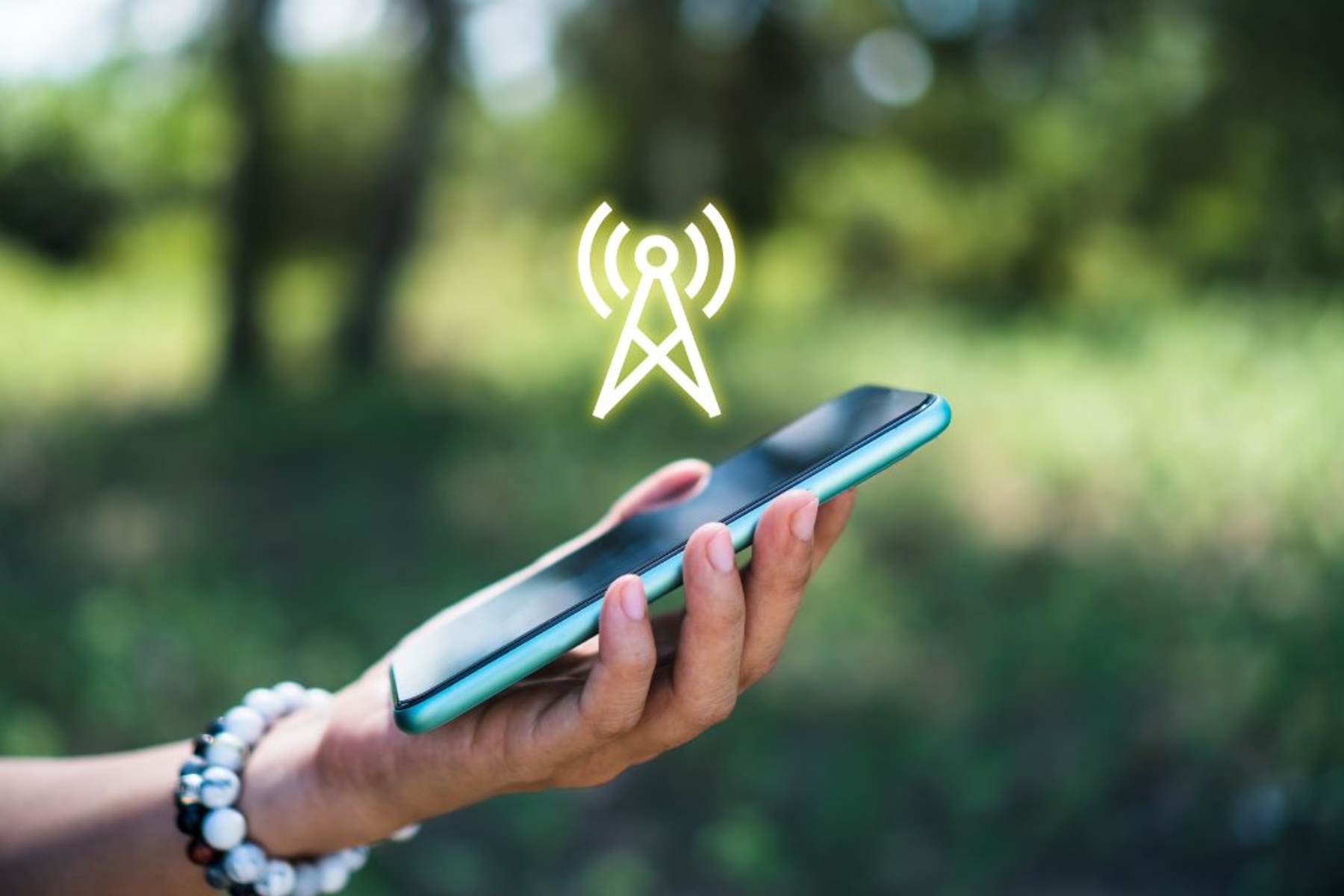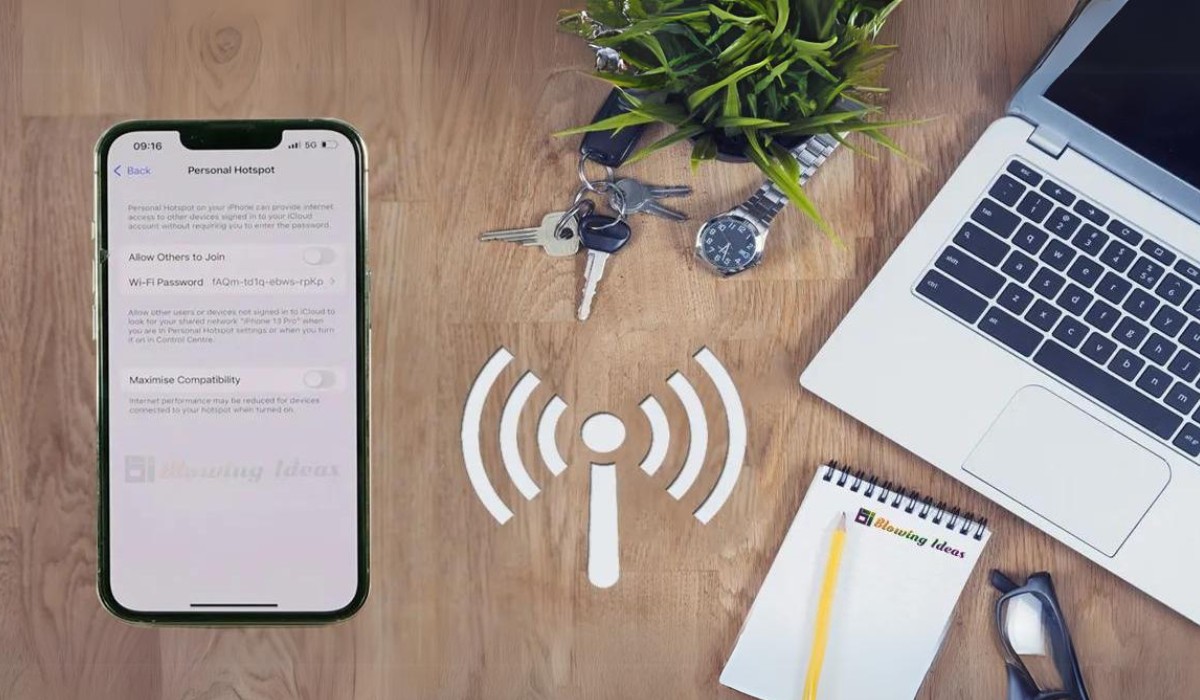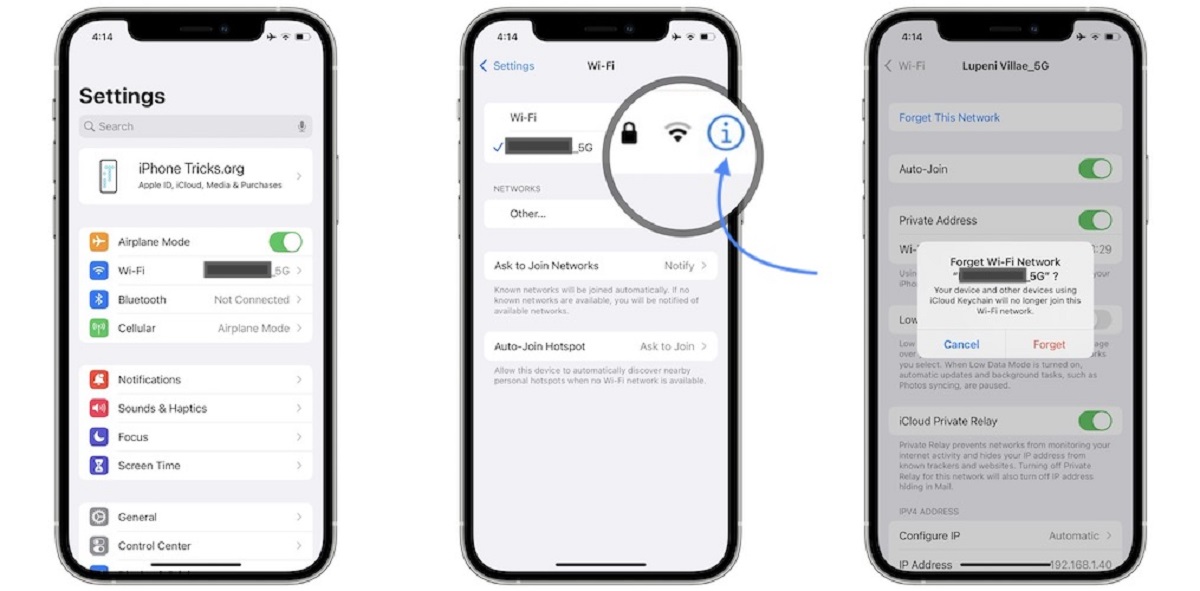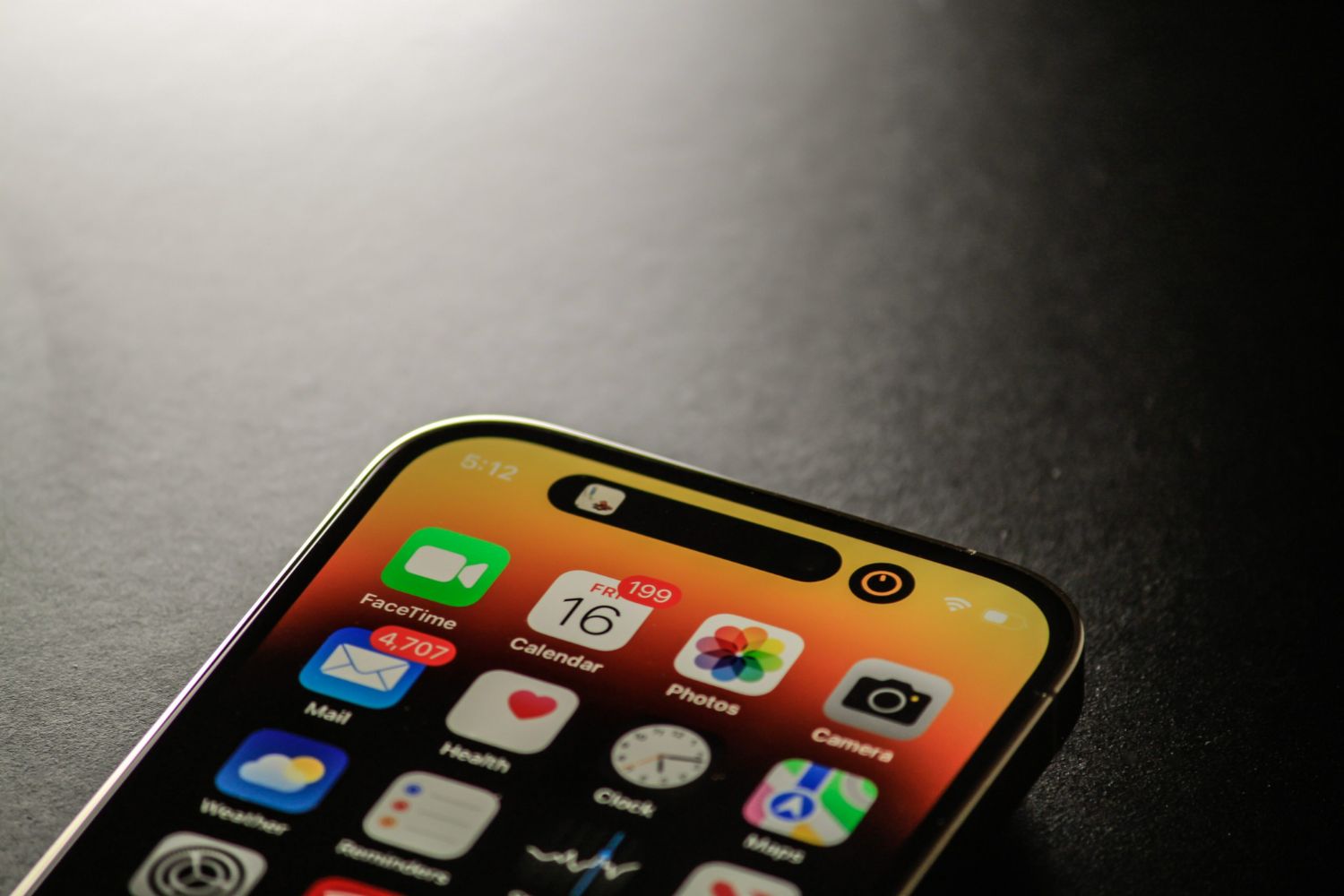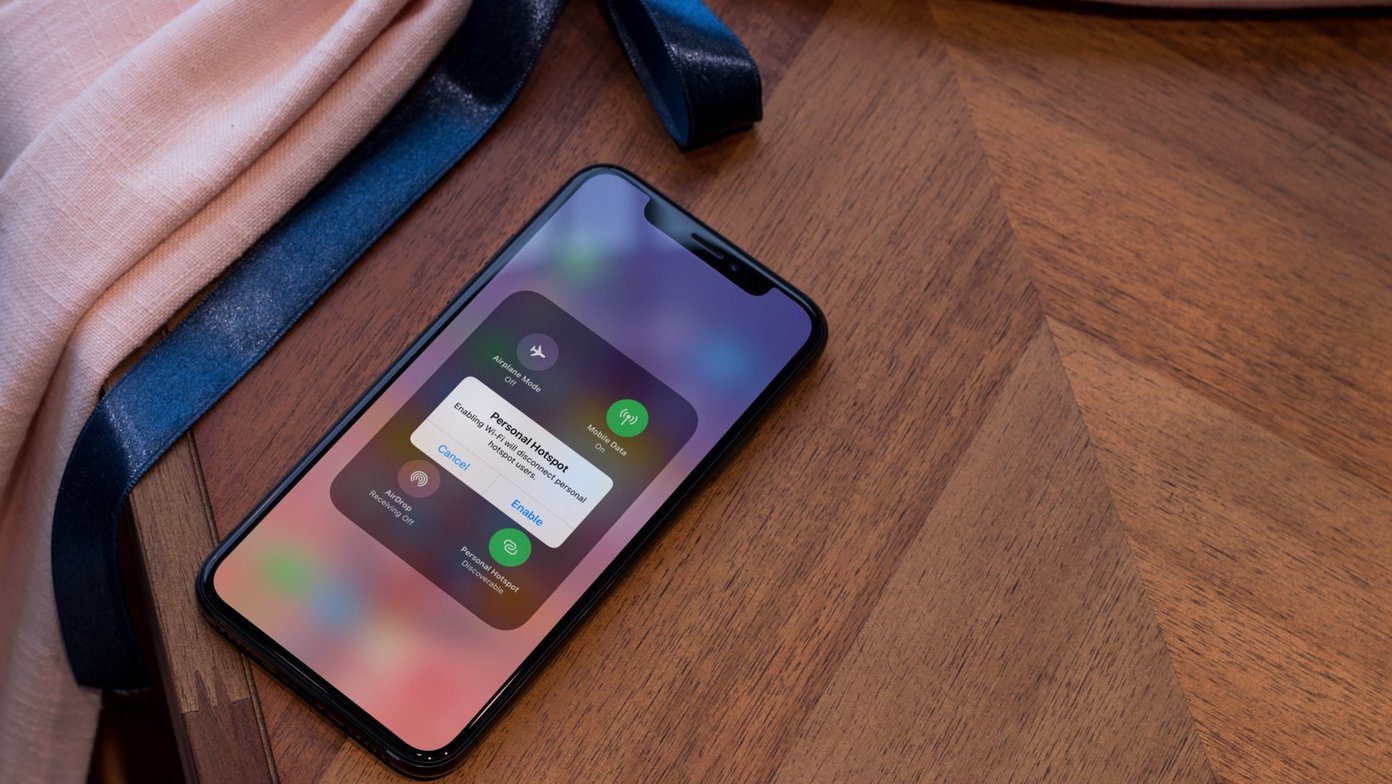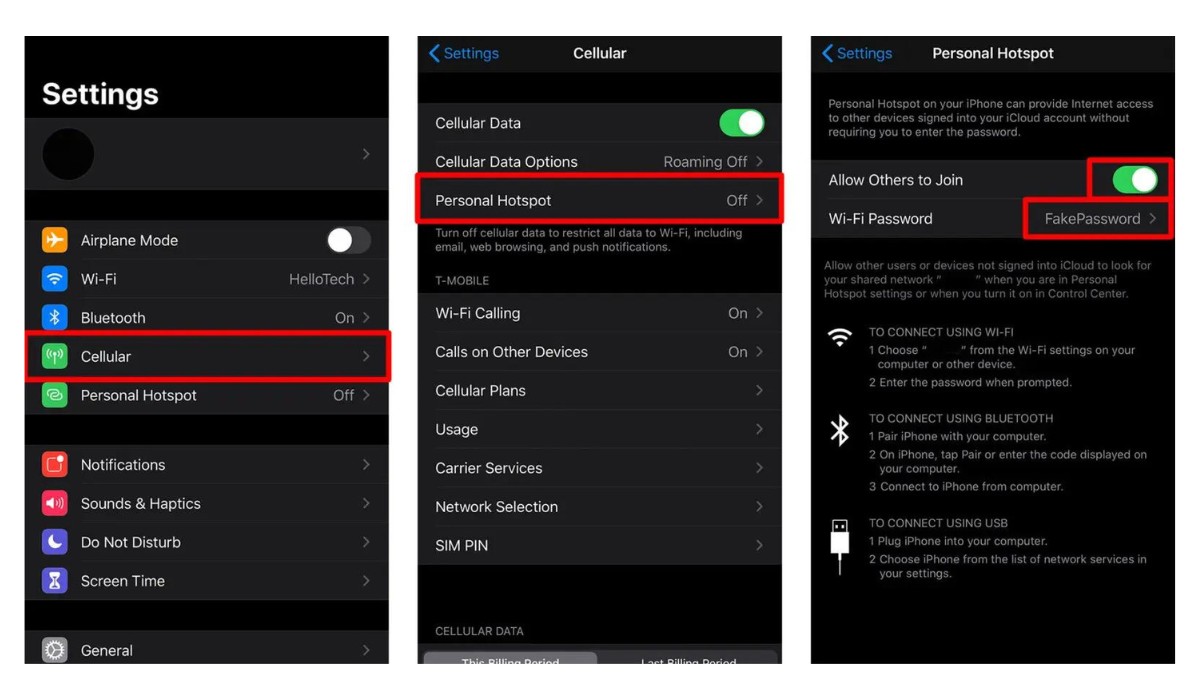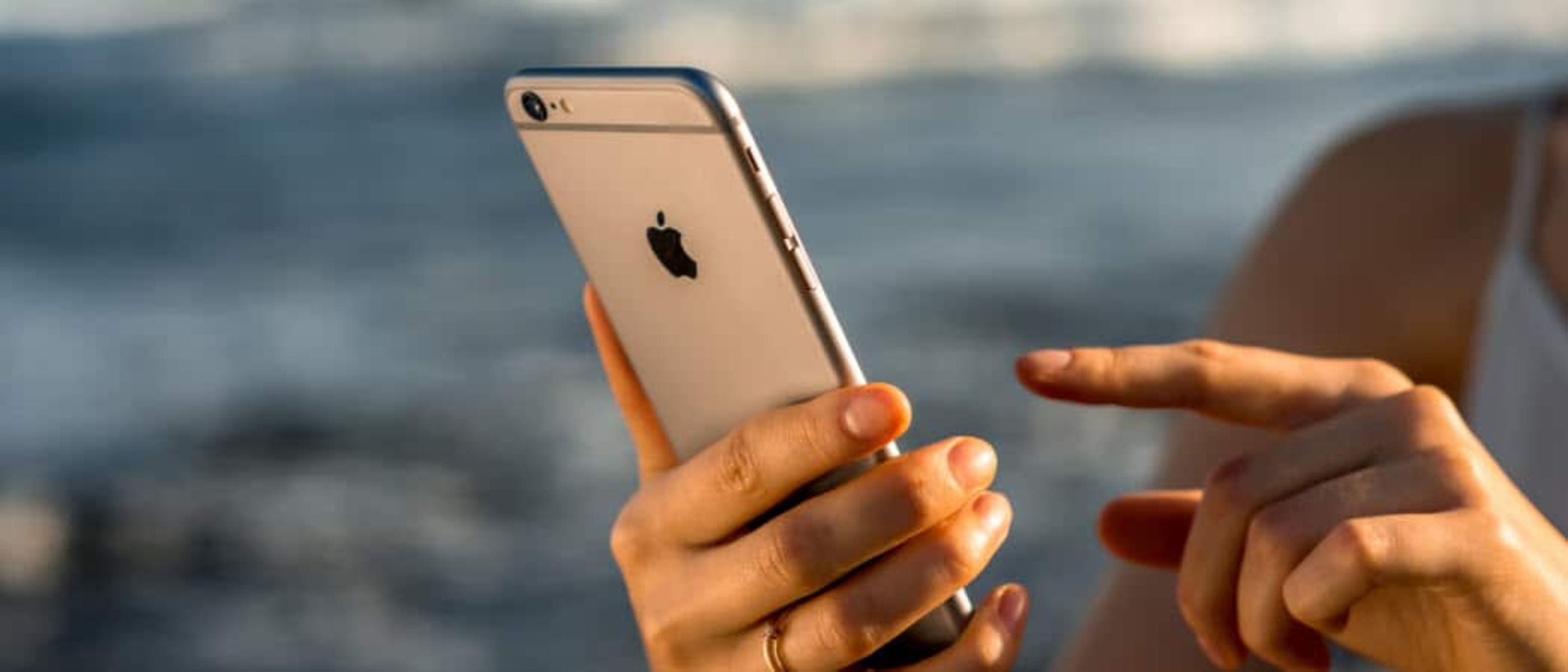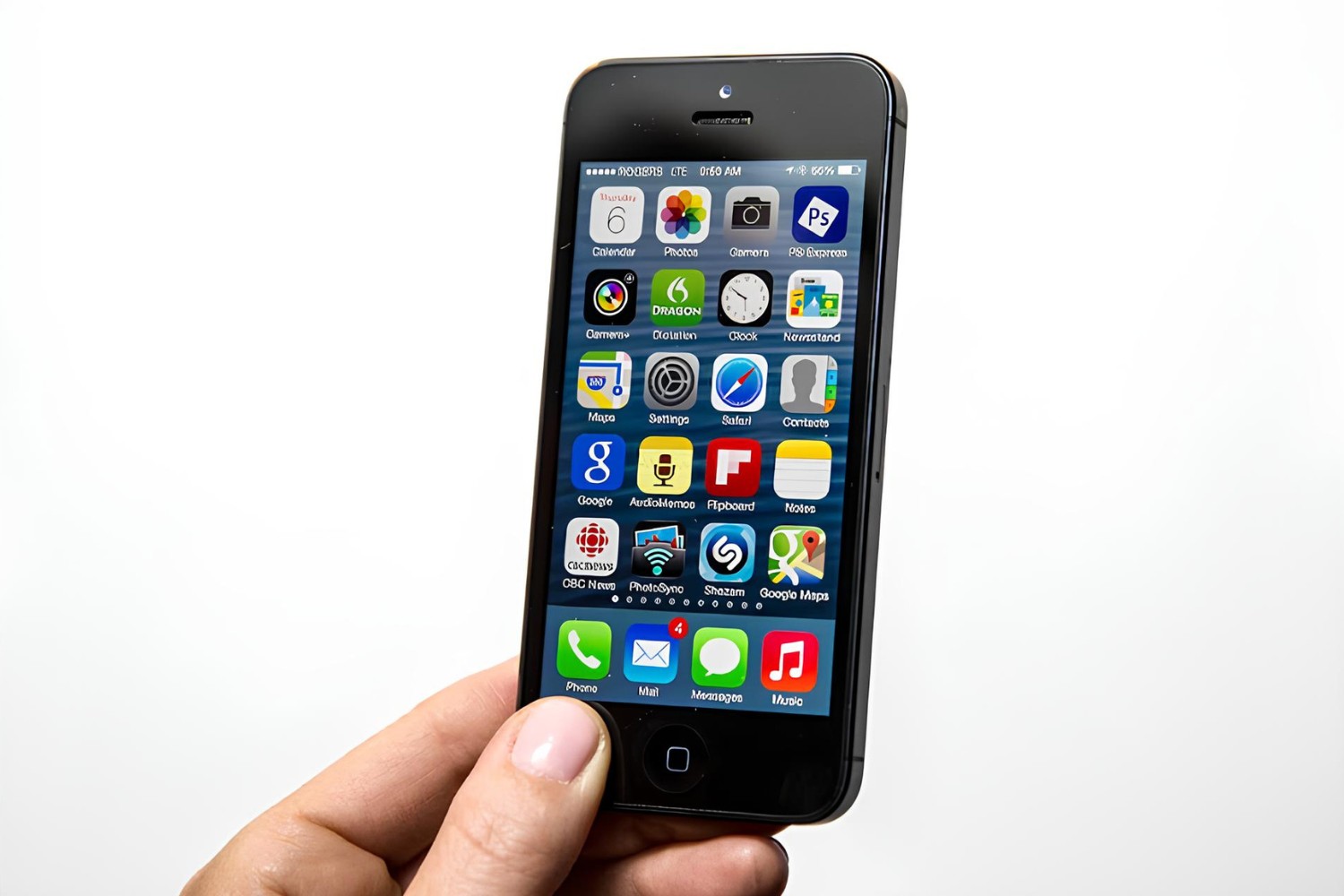Introduction
When you're on the go and in need of a reliable internet connection, your iPhone's hotspot feature can be a lifesaver. Whether you're working remotely, streaming your favorite shows, or simply staying connected while traveling, the ability to share your iPhone's cellular data with other devices is incredibly convenient. However, like any technology, the iPhone hotspot feature isn't immune to occasional hiccups. If you've experienced frustrating disconnections or unreliable performance while using your iPhone as a hotspot, fear not – there are several troubleshooting tips that can help you address these issues and restore seamless connectivity.
In this guide, we'll explore a series of practical steps to troubleshoot and resolve iPhone hotspot disconnection issues. From checking for software updates to identifying potential sources of interference, we'll cover a range of strategies designed to get your hotspot back up and running smoothly. By following these troubleshooting tips, you can regain confidence in your iPhone's hotspot functionality and enjoy uninterrupted internet access wherever you go.
So, if you've ever found yourself in a situation where your iPhone hotspot unexpectedly disconnects or fails to maintain a stable connection, this guide is tailored to help you navigate through the troubleshooting process. By the end of this article, you'll be equipped with the knowledge and techniques to address common hotspot issues and ensure a reliable and consistent internet connection for all your devices. Let's dive in and explore the essential steps to troubleshoot iPhone hotspot disconnection problems.
Check for Software Updates
One of the simplest yet most effective troubleshooting steps for addressing iPhone hotspot disconnection issues is to ensure that your device's software is up to date. Apple regularly releases software updates that not only introduce new features and enhancements but also address known bugs and connectivity issues. By checking for and installing the latest software updates on your iPhone, you can potentially resolve underlying issues that may be affecting the stability of your hotspot connection.
To check for software updates, navigate to the "Settings" app on your iPhone and select "General." From there, tap on "Software Update" to initiate a check for any available updates. If an update is indeed available, follow the on-screen prompts to download and install it on your device. It's important to ensure that your iPhone is connected to a stable Wi-Fi network and has sufficient battery life to complete the update process successfully.
By keeping your iPhone's software up to date, you can take advantage of the latest improvements and bug fixes provided by Apple. This proactive approach not only helps in addressing existing hotspot disconnection issues but also contributes to the overall performance and security of your device.
In some cases, software updates may specifically target connectivity-related issues, including those affecting the iPhone's hotspot functionality. Therefore, regularly checking for and installing software updates is a fundamental step in maintaining the optimal performance of your iPhone's hotspot feature.
By prioritizing software updates as part of your troubleshooting routine, you can leverage the ongoing support and enhancements provided by Apple, ensuring that your iPhone's hotspot remains reliable and consistent in providing internet access to your connected devices.
Restart Your iPhone
Restarting your iPhone is a fundamental troubleshooting step that can effectively address a wide range of technical issues, including hotspot disconnection problems. This simple yet powerful action can help reset various system processes and clear temporary glitches that may be impacting the performance of your device's hotspot feature.
To restart your iPhone, begin by pressing and holding the power button until the "slide to power off" slider appears on the screen. Once the slider appears, swipe it to the right to power off your iPhone. After your device has completely powered down, press and hold the power button again until the Apple logo appears, indicating that your iPhone is restarting.
By performing a restart, you allow your iPhone to undergo a clean shutdown and subsequent boot-up sequence, which can help eliminate any lingering issues that may be causing the hotspot disconnections. This process effectively refreshes the device's software and can often resolve transient connectivity issues that may arise during normal usage.
In addition to addressing hotspot problems, restarting your iPhone can also have a positive impact on overall system performance. It provides a fresh start for the device, allowing it to reinitialize various system components and processes, which can contribute to improved stability and responsiveness.
Furthermore, restarting your iPhone is a non-intrusive troubleshooting step that does not require any technical expertise or specialized tools. It is a user-friendly action that can be performed quickly and easily, making it an accessible solution for users experiencing hotspot disconnection issues.
In situations where your iPhone's hotspot appears to be intermittently disconnecting or exhibiting erratic behavior, initiating a restart can often serve as an effective first line of defense. By incorporating this step into your troubleshooting routine, you can proactively address potential software-related issues and restore the reliability of your iPhone's hotspot functionality.
Ultimately, the act of restarting your iPhone serves as a foundational troubleshooting measure that can help alleviate hotspot disconnection issues and promote a more seamless and consistent internet sharing experience across your connected devices.
Reset Network Settings
Resetting the network settings on your iPhone can serve as a powerful troubleshooting technique when dealing with persistent hotspot disconnection issues. This process effectively clears all network-related configurations and preferences on your device, providing a clean slate for establishing new connections and resolving connectivity issues.
To initiate a network settings reset, navigate to the "Settings" app on your iPhone and select "General." From there, scroll down and tap on "Reset," then choose "Reset Network Settings." You may be prompted to enter your device passcode before confirming the reset. Once confirmed, your iPhone will proceed to reset all network settings, including Wi-Fi, cellular, Bluetooth, and VPN configurations.
It's important to note that resetting network settings will not erase your personal data or media. Instead, it focuses specifically on network-related parameters, returning them to their default state. As a result, any underlying network-related issues, including those affecting the stability of your iPhone's hotspot feature, can potentially be resolved through this comprehensive reset process.
Upon completing the network settings reset, your iPhone will reboot, and you will need to reconfigure your Wi-Fi, Bluetooth, and cellular settings, as well as reconnect to any saved networks. While this may require a bit of initial setup, the benefit lies in establishing a fresh network environment on your device, free from potential conflicts or misconfigurations that may have contributed to the hotspot disconnection issues.
By performing a network settings reset, you essentially eliminate any lingering network-related issues that may be impacting the performance of your iPhone's hotspot feature. This approach provides a systematic method for addressing connectivity challenges, allowing you to start anew with a clean network slate and potentially resolve the underlying causes of hotspot disconnections.
In essence, the network settings reset serves as a proactive troubleshooting step that can effectively mitigate persistent hotspot disconnection issues. It offers a comprehensive solution for addressing network-related anomalies, enabling your iPhone to establish stable and reliable connections for sharing its cellular data with other devices.
Incorporating the network settings reset into your troubleshooting repertoire demonstrates a proactive approach to resolving hotspot disconnection issues, ultimately contributing to a more seamless and dependable internet sharing experience across your connected devices.
Check for Carrier Settings Updates
Checking for carrier settings updates is a crucial step in troubleshooting iPhone hotspot disconnection issues. Carrier settings updates are released by mobile network operators to optimize network connectivity, address compatibility issues, and enhance the overall performance of your iPhone's cellular capabilities, including the hotspot feature.
To check for carrier settings updates, navigate to the "Settings" app on your iPhone and select "General." From there, tap on "About." If a carrier settings update is available, a prompt will appear, allowing you to download and install the update. It's essential to have a stable internet connection, preferably through Wi-Fi, to ensure a smooth update process.
By regularly checking for carrier settings updates, you ensure that your iPhone is equipped with the latest configurations and optimizations provided by your mobile network operator. These updates often include improvements that can directly impact the stability and reliability of your iPhone's hotspot functionality.
Carrier settings updates can address a wide range of network-related issues, including those that may affect the performance of your iPhone's hotspot feature. By staying current with these updates, you can proactively mitigate potential connectivity challenges and ensure that your device is fully optimized to deliver seamless internet sharing to your connected devices.
In some cases, carrier settings updates may specifically target hotspot-related optimizations, aiming to enhance the performance and stability of the hotspot feature. Therefore, by actively checking for and installing these updates, you demonstrate a proactive approach to maintaining the optimal functionality of your iPhone's hotspot.
Furthermore, carrier settings updates are designed to ensure compatibility with evolving network technologies and standards, allowing your iPhone to adapt to changes in the cellular landscape. By embracing these updates, you position your device to leverage the latest advancements in network connectivity, ultimately enhancing the reliability and performance of your iPhone's hotspot feature.
Incorporating the practice of checking for carrier settings updates into your troubleshooting routine demonstrates a commitment to maximizing the potential of your iPhone's cellular capabilities, including its hotspot functionality. By prioritizing these updates, you contribute to a more robust and dependable internet sharing experience across your connected devices.
By proactively engaging with carrier settings updates, you empower your iPhone to maintain optimal network connectivity and deliver consistent and reliable hotspot functionality, ensuring that you can stay connected and productive wherever you go.
Disable Low Power Mode
When troubleshooting iPhone hotspot disconnection issues, it's essential to consider the impact of Low Power Mode on the overall performance of your device. Low Power Mode is a valuable feature designed to conserve battery life by reducing background activity and optimizing power consumption. While this mode is highly beneficial for extending the battery longevity of your iPhone, it can inadvertently affect the functionality of certain features, including the hotspot.
When Low Power Mode is enabled, your iPhone takes measures to minimize power usage, such as reducing mail fetch, background app refresh, automatic downloads, and visual effects. While these adjustments are effective in conserving battery, they may also impact the device's ability to maintain consistent and reliable connections, especially when serving as a hotspot for other devices.
To disable Low Power Mode, navigate to the "Settings" app on your iPhone and select "Battery." Within the Battery settings, you'll find the option to toggle off Low Power Mode. Once disabled, your iPhone will resume normal operation, allowing all background activities and network functionalities to operate at their full capacity.
By disabling Low Power Mode, you effectively restore your iPhone's ability to operate without the power-saving restrictions imposed by this feature. This can lead to improved stability and performance, particularly in scenarios where hotspot disconnection issues may have been exacerbated by the limitations imposed by Low Power Mode.
Moreover, disabling Low Power Mode not only addresses hotspot-related concerns but also ensures that your iPhone is operating at its full potential, providing a more seamless and responsive experience across all functionalities. This proactive step can significantly contribute to the overall reliability of your iPhone's hotspot feature, allowing it to consistently deliver internet connectivity to your connected devices without the constraints imposed by power-saving measures.
In essence, by recognizing the potential impact of Low Power Mode on your iPhone's network capabilities and taking proactive measures to disable it when troubleshooting hotspot disconnection issues, you can effectively optimize the performance and stability of your device. This approach aligns with the goal of ensuring a dependable and uninterrupted internet sharing experience, ultimately enhancing the overall functionality of your iPhone's hotspot feature.
Check for Interference
When troubleshooting iPhone hotspot disconnection issues, it's crucial to consider the potential impact of interference on the stability and performance of your device's wireless connectivity. Interference can arise from various sources, including nearby electronic devices, physical obstructions, and environmental factors, all of which have the potential to disrupt the seamless operation of your iPhone's hotspot feature.
One common source of interference is the presence of other electronic devices operating on similar frequencies, such as Wi-Fi routers, Bluetooth devices, and even microwave ovens. These devices emit signals that can interfere with the wireless connection established by your iPhone when serving as a hotspot. Additionally, physical obstructions, such as walls, metal surfaces, and dense structures, can impede the propagation of wireless signals, leading to potential disruptions in connectivity.
To address potential interference issues, consider the physical environment in which you are using your iPhone's hotspot. Are there nearby devices or appliances that may be emitting signals on overlapping frequencies? Are there structural elements or materials that could obstruct the transmission of wireless signals? By identifying and mitigating these potential sources of interference, you can significantly improve the reliability and stability of your iPhone's hotspot connection.
In practical terms, relocating your iPhone to a different position or adjusting the placement of nearby devices can often mitigate interference issues. Additionally, ensuring that your iPhone has a clear line of sight to connected devices can help minimize the impact of physical obstructions on wireless signal propagation. By optimizing the physical environment and minimizing potential sources of interference, you create a more conducive setting for maintaining a stable and consistent hotspot connection.
Furthermore, considering environmental factors such as crowded Wi-Fi networks in public spaces or high-density residential areas is essential when troubleshooting hotspot disconnection issues. In these scenarios, the sheer volume of wireless signals from neighboring networks can contribute to interference, potentially impacting the performance of your iPhone's hotspot. Selecting less congested Wi-Fi channels or utilizing the 5GHz band, if supported by your device, can help mitigate these environmental interference challenges.
By proactively evaluating and addressing potential sources of interference, you can enhance the overall reliability and performance of your iPhone's hotspot feature. This approach aligns with the goal of ensuring consistent and uninterrupted internet sharing across your connected devices, ultimately optimizing the functionality of your iPhone as a reliable mobile hotspot.
Contact Apple Support
If you've diligently followed the troubleshooting steps outlined in this guide and continue to experience persistent iPhone hotspot disconnection issues, it may be time to seek assistance from Apple Support. While the previous troubleshooting measures are designed to address common and resolvable issues, there are instances where more complex or underlying hardware-related issues may be contributing to the observed connectivity challenges.
Contacting Apple Support provides access to a dedicated team of experts who specialize in diagnosing and resolving technical issues specific to Apple devices. By reaching out to Apple's support channels, you can engage with knowledgeable professionals who can offer personalized guidance and assistance tailored to your unique situation.
When initiating contact with Apple Support, you have several options available to connect with a support representative. These options include scheduling a call with Apple's technical support team, engaging in live chat sessions through the official Apple Support website, or visiting an Apple Store or authorized service provider for in-person assistance.
During your interaction with Apple Support, be prepared to provide detailed information about the specific symptoms and behaviors you've observed with your iPhone's hotspot feature. Describing the frequency of disconnections, any error messages encountered, and the context in which the issues occur can help the support team gain a comprehensive understanding of the challenges you're facing.
Apple's support professionals have access to advanced diagnostic tools and resources that enable them to thoroughly assess the health and performance of your iPhone, including its hotspot functionality. Through a systematic evaluation, they can identify potential hardware or software anomalies that may be contributing to the observed hotspot disconnection issues.
In many cases, Apple Support can provide targeted recommendations, perform remote diagnostics, or facilitate the arrangement of in-store service appointments to further investigate and address the underlying causes of the connectivity challenges you're experiencing. This personalized assistance ensures that you receive expert guidance and support in resolving the issues affecting your iPhone's hotspot feature.
By engaging with Apple Support, you can leverage the collective expertise and resources available through the official support channels, empowering you to address complex hotspot disconnection issues with confidence. This proactive approach aligns with the goal of ensuring that your iPhone operates at its optimal capacity, delivering reliable and consistent internet sharing capabilities to your connected devices.
In summary, when conventional troubleshooting efforts have proven insufficient in resolving persistent hotspot disconnection issues, reaching out to Apple Support offers a valuable opportunity to tap into specialized expertise and resources, ultimately working towards a comprehensive resolution for the challenges impacting your iPhone's hotspot functionality.







